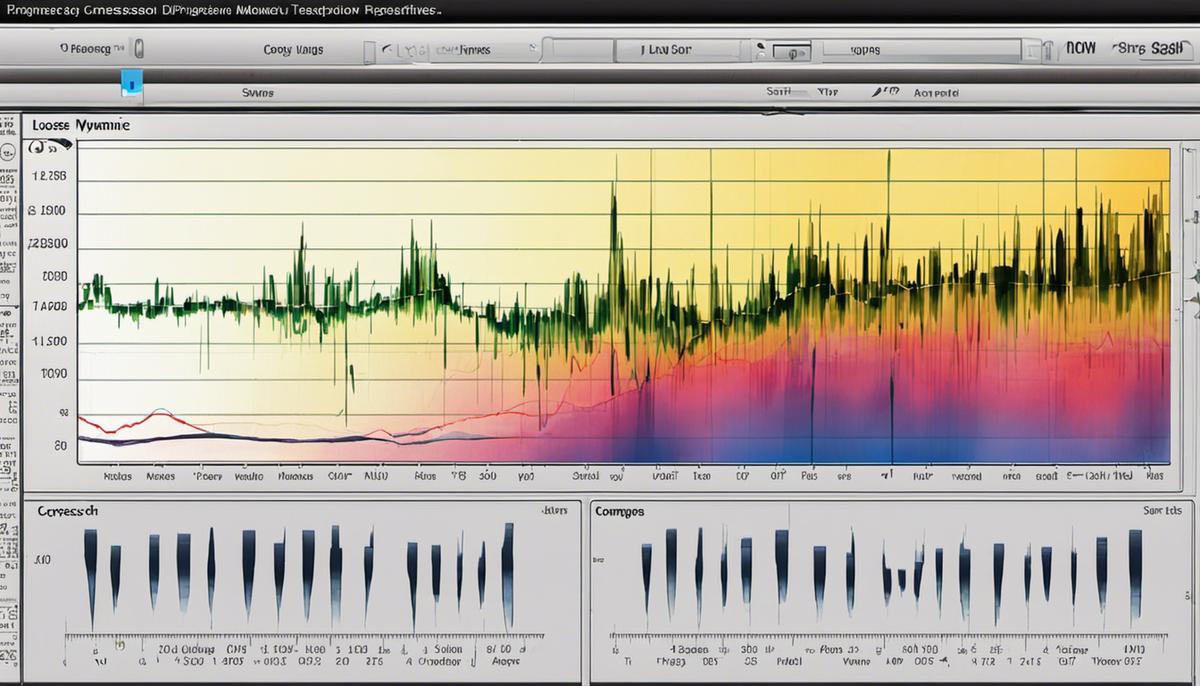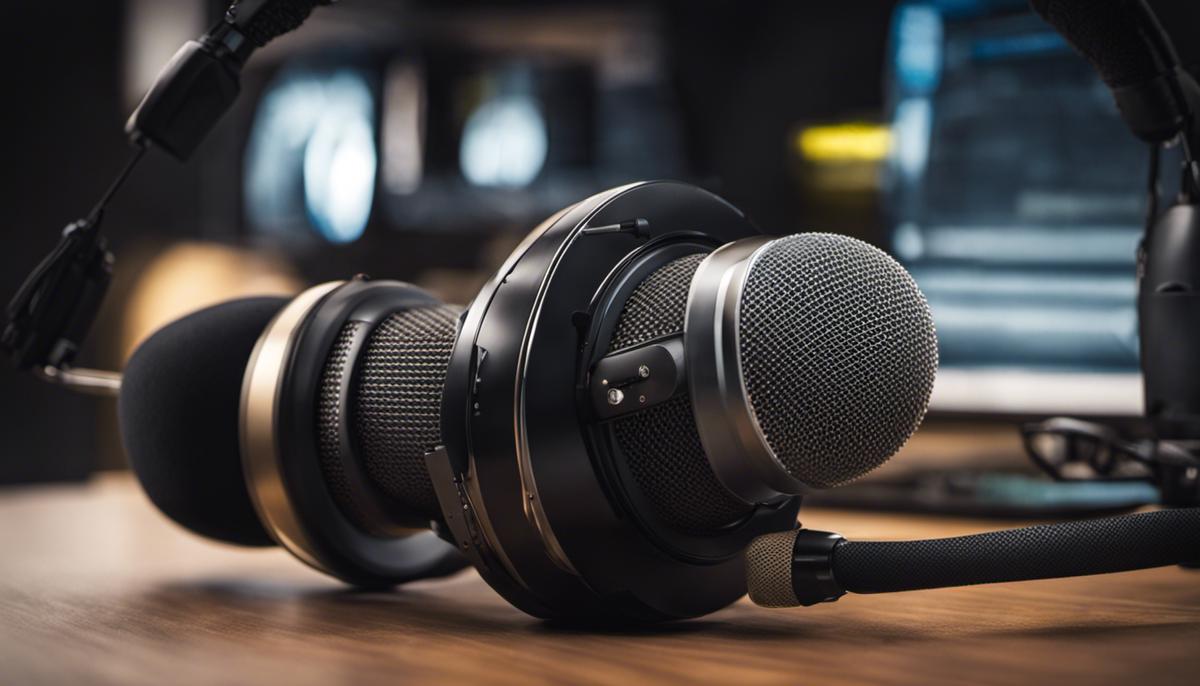The art of music production is as intricate as it is exciting, with the power to elate or deflate quite literally in the ‘mix’. One aspect of the process that often presents a tricky challenge is audio compression. Compression, while seemingly simple, is delicate, wielding immense influence on the overall quality of the final mix. It can tighten up a mix, control dynamic ranges, and add a pro touch, yet when not properly implemented, can swiftly turn the mix into an aural disappointment. The following discourse illuminates the complexities of avoiding over-compression, an often overlooked yet crucial element to achieving sonic balance in your mix. Diving deep into this compression conundrum, we will explore the foundations, dangers of overuse, the elusive balance, escaping techniques and finally, how to evaluate it all.
Understanding the Concept of Compression in Music Mixing
Underneath shimmering stage lights, amidst the thumping heartbeats of die-hard music fans, a shared and understood truth emerges: it all comes down to the mix. Whether it’s a soulful strum of a guitar, the heart-wrenching whimper of a piano, or the mesmerizing rhythm of a drum beat, each sound contributes to the whole. And within this symphony of sounds lies the oft-unappreciated art of audio compression—an indispensable secret weapon of seasoned audio engineers the world over. The question arises, then, how critical is understanding the essence of compression in creating the ideal mix?
Stand on the shoulders of music production giants and you’ll see a world where each individual sound must share space with the others, a realm where the delicate seesaw of numerous elements slotting together to form the perfect mix is a necessity rather than an indulgence. At the heart of this harmonious equilibrium—our trusted, yet misunderstood sidekick—compression.
Hiding in plain sight, compression is the unseen conductor guiding the symphony of sounds within a mix. It ensures balance and prevents chaos, curbing overly boisterous instruments that may seek to drown out their other counterparts. A fine-tuned understanding of compression is like acquiring a magical key that unlocks a hidden realm in music creation, allowing the shaping, bending, and molding of sounds to fit the artist’s vision.
To grasp the essence of compression, we draw upon the compelling marriage of science and emotion. The science clusters around regulating the dynamic range, delicately taming the loudest peaks while elevating the softest whispers. The emotion comes from creating a full-bodied sound that resonates deeply with listeners, wrapping them in an intimate sonic blanket.
Even amidst the intoxicating cocktail of bass drops and blues scales, the secret sauce of compression pays homage to an old adage: less is more. But this does not merely mean less volume. No, it is a reduction in the dynamic range that births a mix where every element can shine without stepping on each other’s sonic toes. Compression bestows power upon the whispering subtleties and grants humility to the dominating elements of a mix, a dance of control that elevates a good mix to a masterpiece.
Of course, like with any artisan skill, knowing when to apply compression, and to what degree, takes copious amounts of practice, intuition, and a certain kind of ear. It’s a delicate balance of technical prowess and creative audacity. Restrained when it needs to be, and assertive when the mix demands.
So, let us revel in the recognition of compression for its vital role and let’s take a moment to laud this relatively unsung hero of music production. And here then is the truth, resonating loud and clear: in the tactile hands of a discerning audio engineer, an understanding of the essence of compression becomes the lifeblood of a transcendent mix, one that hums in the ears, strikes the heart, and unifies us all in the love of music. Because at the end of the day – music isn’t just about hearing, it’s about feeling, sharing, and experiencing together as one.

The Possible Dangers of Over-compression
In music production, the question is not IF one should use compression, but HOW MUCH to use. Like the careful seasoning of a master chef, this invaluable tool can elevate a mix to its zenith or plummet into a muddy abyss. Over-compression, often referred to as the “loudness war,” has ridden the waves of music production, both alluring and intimidating in its role in shaping the soundscape.
As a violent storm can shut out the beauty of a serene landscape, over-compression, too, obliterates the dynamics and subtleties inherent in a piece of music. While compression’s primary purpose is to tame peaks and balance the dynamic range, when applied excessively, it ironically leads to a flattened, lifeless mix. The loudness war results from this misuse of compression where producers, in an effort to create the loudest track, compress to such an extreme that it leaves listeners fatigued, bereaved of the emotional connection that music so abundantly promises.
Think of over-compression as the relentless noise in a bustling city, an unending symphony of distractions that leaves no room for the exhilarating sensation of silence. It doesn’t allow the music to breathe. The sonic texture of the piece is rendered palpably sterile, devoid of the infectious ebbs and flows that capture the vast spectrum of human emotions.
Take a moment to visualize a live orchestra: the bass notes carefully intertwined with the treble, the hushed whisper of the violins dancing with the robust boldness of the drums. Each instrument holds its unique charm, contributing to the harmonic whole. Over-compression bulldozes this distinctiveness, blotting out the soft murmurs, that whispering wind through the reeds, leaving only a loud monotone echo in its wake.
Furthermore, when we tread into the realm of diverse musical genres, over-compression becomes particularly egregious. From the enigmatic suspense of a lo-fi track to the lilting narrative of folk music or the throbbing energy of rock – diversity is the essence of the music landscape. Over-compression, in its relentless pursuit of loudness, strips away these nuances, leaving a music piece stranded in a wasteland of sameness.
This raises an important question – why does this menace persist? The driving force behind the loudness war is psychological – louder appears better to the human ear. The catch, however, is that this deceptive auditory illusion is short-lived. A listener’s ear quickly tires of the relentless onslaught of sound, leading to a detached and unmoving experience.
Music, in its purest form, is a compelling storyteller, a relentless explorer of the human condition. It weaves tales of joy, sorrow, longing and love, all within the confines of rhythm and melody. To experience music is to feel the rhythm of life itself. Over-compression, therefore, stands as a towering impediment in this exquisite journey. The key lies in striking an optimal balance, maintaining the dynamic contrast while achieving a subjectively loud mix. It is a dance of control, of knowing when to harness the power of compression, and when to let the raw, untamed dynamics breathe and bloom. After all, the symphony of life is beautifully diverse, and so should be the music that soundtracks it.

The Thin Line Between Enough and Too Much Compression
While the utility of compression in music production is undeniable, the surge of over-compression, particularly in the last few decades, threatens to muddle musical artistry. A result of the ‘loudness war,’ over-compression is a striking example of when the quest for greater volume becomes detrimental to the overall quality of music. Picture this; in the heart of a bustling city, the cacophony of blaring horns, rumbling engines, and chatter disguise the breezy whispers of rustling leaves – an auditory scenario that starkly emulates the effects of over-compression on a musical track.
When a musical composition is over-compressed, the dynamic range is squeezed to the brim, bleaching out the nuanced interplay between instruments. It’s as if their individual voices, each holding a different texture and story, melt into each other, losing their distinctiveness. The soft cello’s subtle undercurrent undulated by waves of violins or that quiet, aching twang of a bass behind the effervescence of electric guitars – over-compression blurs these fine lines, leaving a loud, flat wall of sound in its wake.
Contrary to the popular adage that louder is better, excessive compression creates a short-lived gratification that wanes once the novelty of the added volume fades. Listeners might initially perceive the elevated loudness as thrilling, but soon enough, the lack of ebb and flood in music dynamics saps the excitement and robs the art of its evocative potential.
Think of music as a sonic storytelling device, and dynamics as the plot twists and climaxes. When over-compression takes the reins, the auditory narrative becomes one-dimensional, and the subtle shifts in texture and tempo that invite listeners into an immersive experience are hampered. Victoria Williams’ poignant inflections that surge in “Crazy Mary” or the heartrending piano crescendo in Radiohead’s “Videotape” – the ability of such passages to stir emotions are contingent on their contrast to the quieter, subtler portions of the track.
So, what does it take to maintain the vitality of dynamic contrast while achieving a subjectively loud mix? This question is akin to asking how a conductor can empower each instrument in an orchestra to contribute its unique voice without overpowering the delicate symphony. The key lies in deliberate and nuanced use of compression – understanding the unique characteristics and demands of each instrument and genre and applying compression accordingly.
Over-compression, when excessively applied, is akin to depriving music of its vibrancy and reducing its rich palette of sounds to grayscale. The diverse genres of music are indeed a symphony of life itself, reflecting the plurality and rich experience of being human. Striking a balance with compression is tantamount to honoring the artistry of the individual player, the nuance of the genre, and ultimately, the beauty and complexity of the human condition. Music is a language that transcends borders, a universally relatable form of expression, it deserves nothing less than to be treated thoughtfully, respectfully, and passionately in every step of its creation and dissemination.

Techniques to Avoid Over-compression
Just as there is immense beauty in the quiet, subtle moments of a song that pull at your heartstrings, there is also raw power in an explosively loud and triumphant chorus that galvanizes your spirit. Compression’s unseen magic works to moderate these ebbs and flows, creating harmony between them. However, just as too much of anything good can become harmful, over-compression, too, poses a risk – draining vitality from the music, smearing the textures, and rendering an overall sense of sonic claustrophobia.
Our world has increasingly found itself in a ‘loudness war,’ as artists and recording engineers compress music to make it as loud as possible on the erroneous notion that loud equals better. Yet, in the process, they compromise on dynamics and subtleties that give music its life. An apt analogy would be a city laden with noise pollution – where silence is golden and loudness becomes exhausting, steadily stripping away at the charm of the city itself.
Over-compression, hence, is not just an issue with loudness, but a threat to distinctiveness and nuance in diverse musical genres. It wipes out the gentle strokes of a classical violin piece, the raw emotion of a raspy blues tune, the soulful timbre of romping funk bass – the soft edges that make each genre, each instrument, each artist, unique.
Paradoxically, the short-lived psychological perception that louder is better seems to reign supreme in the loudness war. Consequentially, the transient satisfaction of perceived ‘loudness’ triumphs over sustainable enjoyment of musical quality. The danger lies in numbing the audience’s ability to appreciate the emotional storytelling nature that music possesses – the interplay of delicate quietude and robust loudness.
An undervalued truth in the music production world is that striking a balance with compression maintains the precious dynamic contrast and the power to achieve a deceptively loud and satisfying mix. It preserves the vital relationship between the fluctuating sonic elements of loud and soft, allowing the music to maintain its innate character. To achieve this, it’s essential to understand the distinct characteristics of various instruments and their role within the genre.
With proper compression, music producers can ensure that the subtlety and dynamics that make music alive and vibrant are preserved. Refraining from over-compression breathes life back into the music – enabling it to express the human condition in all its varied shades. From a hushed lullaby to an outburst of rock ‘n roll, from the defiant beats of hip-hop to the subtle strums of a country ballad, music in all its variety, richness, and dynamic range is a reflection of the symphony of life itself.
As lovers, creators, and propagators of music, the responsibility lies in our hands to treat the creation and dissemination of music with the respect and passion that it so deserves. Stand down, loudness war. Let the music speak. Let the dynamics reign. Let the majestic story unfurl, from the hushed beginnings to the climactic finale, unmarred. Hear the melody, feel the beat, experience the story – in all its intended glory.

Evaluation of Under and Over Compressed Audio Files
So the question stands – how do you differentiate and adjudicate between under and over compression in audio files? It’s similar to distinguishing between a carefully crafted hand-ground cup of coffee and a burnt, over-roasted cup of joe from a blitzing production line. You’re looking for balance.
Comparing it metaphorically, over-compression rings equivalent to an overcrowded concert where every note fights for center stage, leading to a cacophony that loses its harmonic appeal. This is often known as ‘brickwalling’, where the audio waveform hits an imaginary brick wall, leading to distortion. The entire dynamic spectrum is squashed, rendering a flat, lifeless representation of a potentially vibrant and evocative musical composition.
Under compression, on the other hand, is much like a half-filled concert hall where the music fails to fill the space, leaving much to be desired. It lacks that striking punch that would otherwise captivate and move the audience. The dynamic range remains too extensive, and the smallest sounds can get buried and lost, while larger sounds may seem distinctly out of place.
So, how does one develop an ear for this?
Listening critically is key. By comparing and contrasting different audio files, you start honing your ability to discern the subtleties that denote over or under compression. Listen to how the different elements interact within the mix. Are some sounds being buried while others are hitting too hard? Does the track have the appropriate amount of dynamic range for its genre and intention?
Another tactic is to reference uncompressed versions of the same tracks. Many websites and tools offer comparisons, which can be insightful in training your ears.
However, it’s crucial to remember that audio compression is ultimately subject to personal taste and the artistic intention behind the piece. Therefore, maintaining a holistic view of the audio piece is paramount. It’s about ensuring that compression serves the song and its story, not dictating it.
From the vinyl aficionados who appreciate the warm ticks and ambient hisses that emphasize the physical delivery of sound, to the digital audiophile whose love for razor sharp sound devoid of any distortion, the passion for music unites us all. As music lovers and creators, we owe it to this universal language to ensure its integrity in all stages of its creation and propagation.
In conclusion, strive for balance. Understand the nuances of the audio-engineering realm, respect the sanctity of the music, and strive to facilitate, not dominate, its narrative. Remember: over-compression or its extreme lack is not a mere technical glitch; it’s a detour from the musical conversation that each track hopes to establish with its listener. As lovers of this cherished art form, let’s ensure that we treat music with the attention and respect it deserves in every form – even in compression.

The journey into understanding and mastering compression in music mixing is far from a linear one, filled with constant learning and experimentation. The complexity and subtlety of the process can seem overwhelming, but with the right knowledge and tools, one can navigate the delicate balance of compressing a mix without losing its dynamic heart and musical depth. Just as every note and melody in a composition holds pertinence, each element of a mix, such as careful compression, contributes to that satisfying, complete audio finish that every producer, artist, and listener desires. Being mindful of these principles, you are well on your way to producing mixes that resonate with vibrancy, depth, and impeccable sound quality. Keep the musical flavor alive, avoid the pitfalls of over-compression, and craft mixes that truly sing.

Comments.
Currently there are no comments related to this article. You have a special honor to be the first commenter. Thanks!